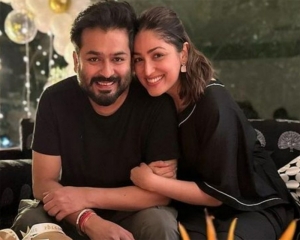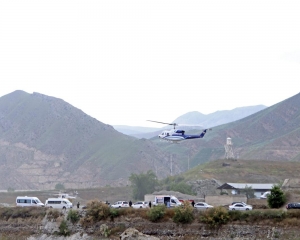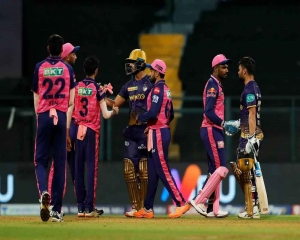Of the 150 villages that exist in West Garo Hills of Meghalaya, only 13 to 15 are Songsarek villages. In these, only five or six houses continue to uphold the ancient Garo traditions and follow the rituals related to the animist society. Wangala dance, brewing of Chubitchi being a few, writes Navneet Mendiratta
It is clearly the road less travelled. The West Garo Hills of Meghalaya in Northeast India may not have attracted the fancy of the tourists as their Khasi hills counterparts (yet), but that could well be a blessing in disguise for a region that is holding on to the last bit of ancient Garo traditions — the Songsarek practices.
Songsarek is a pre-Christian animist religion that is fast losing out to conversions to Christianity, that spread in the region in the second half of the nineteenth century and intensified throughout the twentieth century.
Currently, of the 150 villages that exist in the region, only 13 to 15 are Songsarek villages. In these, only five or six houses continue to actively practise the rituals related to the ancient Garo society.
A narrow hill road leads us to the Songsarek village of Gondenggre. Located in the Rongram subdivision of West Garo Hills district in Meghalaya, the village is located 18 kms from sub-district headquarter Rongram and some 36 kms from district headquarter of Tura.
Our entourage comprises a group of nine Royal Enfield bikers and content crew who are here to document the living heritage of the communities in these regions as part of a unique partnership between Royal Enfield and UNESCO.
The project titled, The Great Himalayan Exploration, involves engaging with Royal Enfield’s motorcycling community and inspiring them to come forward to not just explore the landscape but to help preserve and promote the living heritage of the communities in these regions. Documentation is the first step in this direction.
These practices range from performing arts (dance forms, songs, etc) to tangible crafts (handmade paper from tree bark, specific types of hats, etc), food practices (preservation techniques, culinary cultures), agricultural practices, local medicinal practices, body art and even indigenous spiritual and social systems.
Keepers of the tradition
Upon reaching the village, we are greeted by the Nokma or the village headman with a generous serving of Chubitchi or the traditionally fermented (but weak) alcoholic rice beverage that is poured right into our mouths from an abet or a hollowed dried bottle gourd.
.jpg)
It is the locals’ way of welcoming the guests and must be accepted by them as a mark of honour. Chubitchi flows freely in Garo villages. There is no age or stigma attached to its consumption. It is an important part of every Garo celebration — be it religious rituals, meetings, social gatherings, birth, marriage, during Wangala (harvest festival) or even a house warming ceremony. It is said that in pre-modern era, the Garos would serve the drink before taking off for a hunt or to fight enemies.
The traditional ways of making Chubitchi are said to have been passed down orally among the Garos until the arrival of Baptist American Missionaries. In the present day, though the knowledge of brewing Chubitchi continues to be shared in the interiors of Garo Hills, it is no longer a preferred practice in urban areas.
Songsareks of Gondenggre are friendly albeit private people. Curiously is writ large on their faces as language holds them back from communicating freely with the outsiders. Rakkan M Sangma, Joint Secretary of the 100 Drums Wangala Festival Committee and Secretary of Garo Heritage Village plays interpreter and takes us through the rituals and practices of the villagers.
“Song in the local language means village or a native place and Warek means houses built in a line. By that definition, Gondenggre is a spread out village with houses that are built in a single line,” says Sangma.

“About 5-7 kms from the village, there exists a strong sacred grove called A Song Kosi. It is a special place where outsiders are forbidden from entering. No one is allowed to speak in that forest let alone pluck a single leaf. No one, not even a member of our tribe, can cause any harm to the trees, flowers, or animals there,” he shared.
Cleanliness is a buzzword in most parts of Meghalaya. Made from bamboo, Garo houses typically last for about four to five years. The kitchen is usually located outside the house. A complete set up comprising kitchen and dining space at the entrance of the village is meant to be used by the community for celebrations and meetings. The rooms are usually spread out.
According to Sangma, a lot of taboos including “untouchability” vis-a-vis the outsiders are practiced even today. The outsiders are not allowed to enter or touch anything inside the Garo spaces.
Sacrifice remains an inherent part of Songsarek practices. There is a sacrifice to mark everything that is considered important — it could be a wedding or any celebration, a big announcement, to appease the Gods, to ward off evil or even to fight a disease.
The blood marks are like trophies in the village. The Songsareks believe in keeping their Gods happy.
Dancing to a hundred drums
Wangala, the Garo traditional dance dedicated to their main Deity and the God of Sun, crops and fertility, Misi-Saaljong, features as an Intangible Cultural Heritage (ICH) practice.

Inspired by the wagtail bird, the dance imitates the bird’s behaviour, using musical instruments such as a flute made from buffalo horn and drums. It is a group dance where pairs of men and women wearing wagtail feathers in their headgear line up and move along a circle in short, slow but forceful steps. The dance is led by the Nokma who sings the traditional songs in a high pitch while the rest of the men play the drums. The Garo women folk make traditional dance gestures imitating the bird or even animals and clap.
The women wear skirts made from handwoven cloth woven on looms. The typical pattern is that of the eye of the Goddess of wealth, Susime, resembling a diamond.
Wagtail bird holds a special meaning in the Songsarek beliefs. The villagers closely observe the flight of the bird to predict the waterfall for the season. Every Wangala or the harvest festival, the Songsareks put handprints on their doors (using three fingers) with rice flour indicating the water level and for good harvest. These imprints are usually made by the male members of the community outside the house of the Nokma, where most rituals are conducted.
The Garos are a matrilineal, matrilocal and matrifocal society. They continue to carry forward the surname of the women of the family. The boys live with their parents till they reach puberty and then shift into a dormitory style bachelor home in the village till they get married into a girl’s family. While the matrilineal aspect remains strong, the rules surrounding bachelor homes are somewhat easing out, shares Sangma.
The Great Himalayan Exploration project
Royal Enfield’s partnership project with UNESCO, The Great Himalayan Exploration, draws rider-researchers to document the Intangible Cultural Heritage of the Himalayas.

“The aim is to document and safeguard the Intangible Cultural Heritage of the Himalayas and thereby, raise awareness about the living treasures that make up the beating heart of India,” says Bidisha Dey, Executive Director, Eicher Group Foundation — the CSR and Sustainability arm of Royal Enfield.
According to her, over two editions and 16 curated rides, 119 rider-researchers have already documented 66 practices across the Eastern Himalayan states of Assam, Arunachal Pradesh, Meghalaya, Mizoram, Nagaland, North Bengal, Sikkim and Tripura.
“We are now set to extend our exploration to the Western Himalayas in 2024,” says Dey.
“We conduct a detailed on-ground recee before rolling out the riders to ensure the assent of the locals and as respect for their privacy. We are especially careful to follow the community protocols on how to approach the community and then conduct capacity building programmes to educate the rider researchers before they set out on their journeys,” she shares.
Among the practices recorded are: The black pottery of Tyr Shang village in the West Jaintia Hills of Meghalaya, Muga silk threads of Assam, Mon Shugu, the ancient art of making paper of Arunachal Pradesh, living roots bridges of Meghalaya, handmade mask art of Majuli island, Assam.
“For us, the partnership is not just about the documentation. It’s also about creating awareness about the intangible cultural heritage practices,” concludes Dey.


























